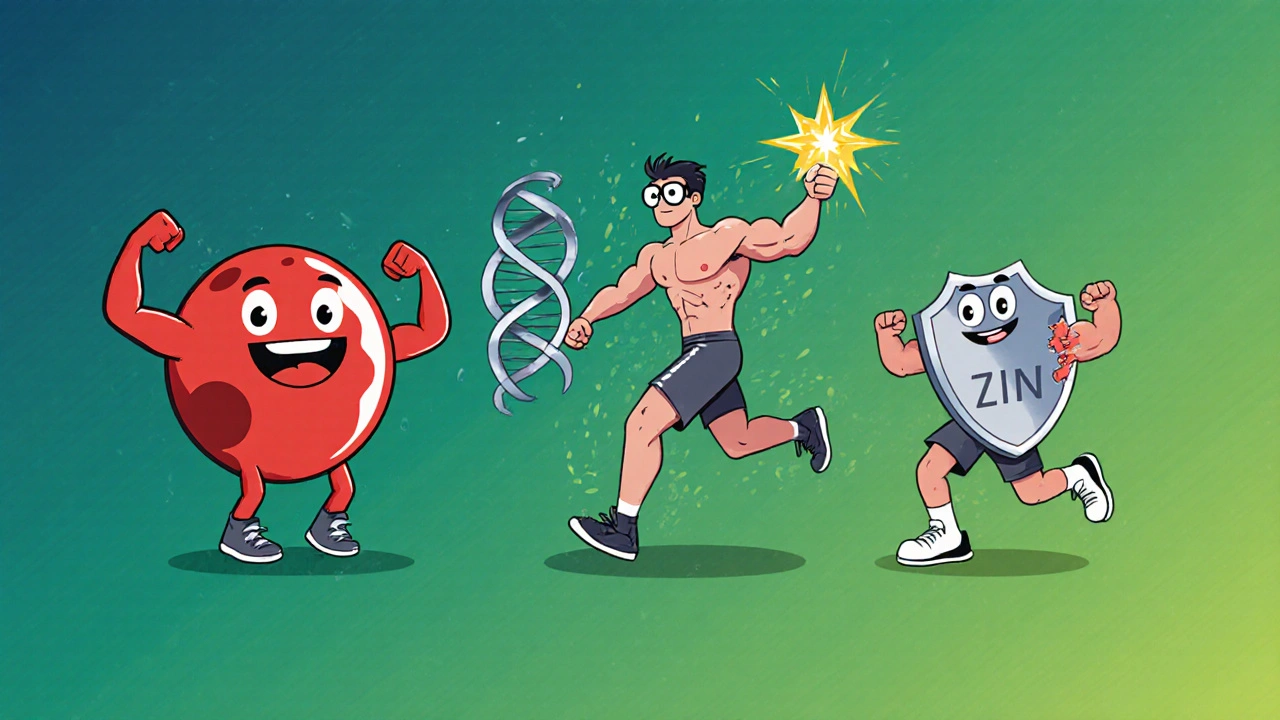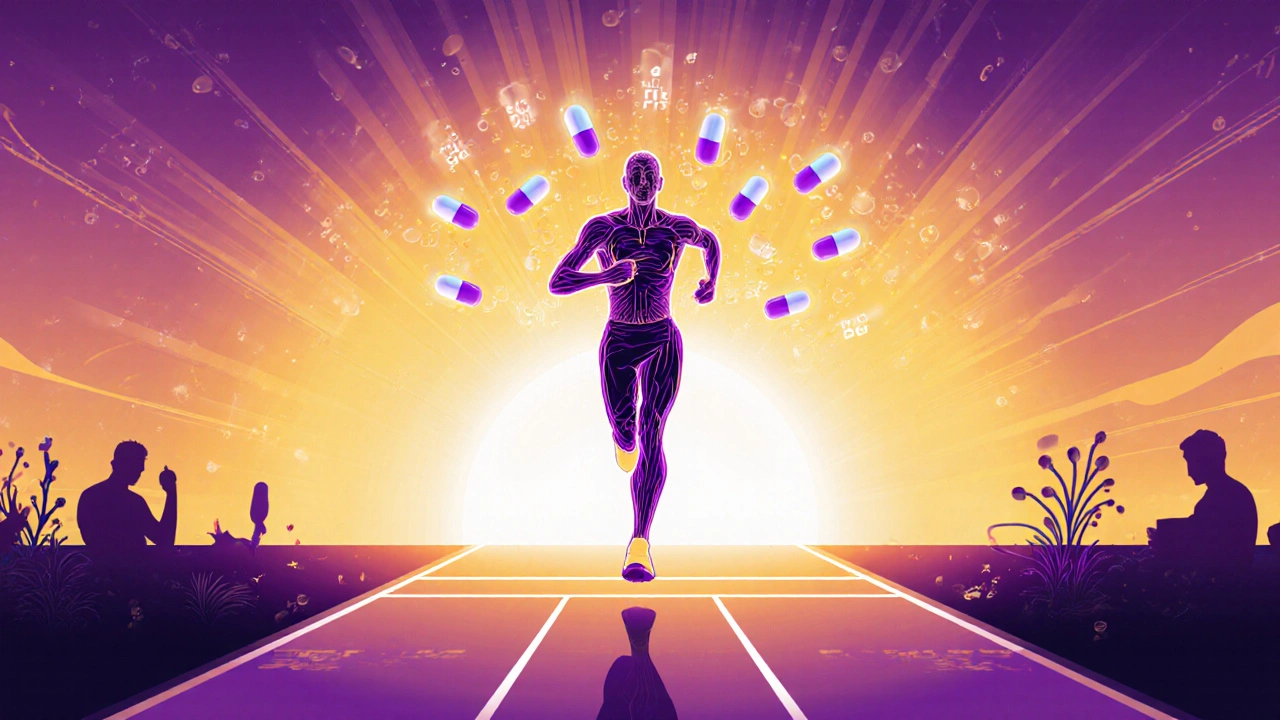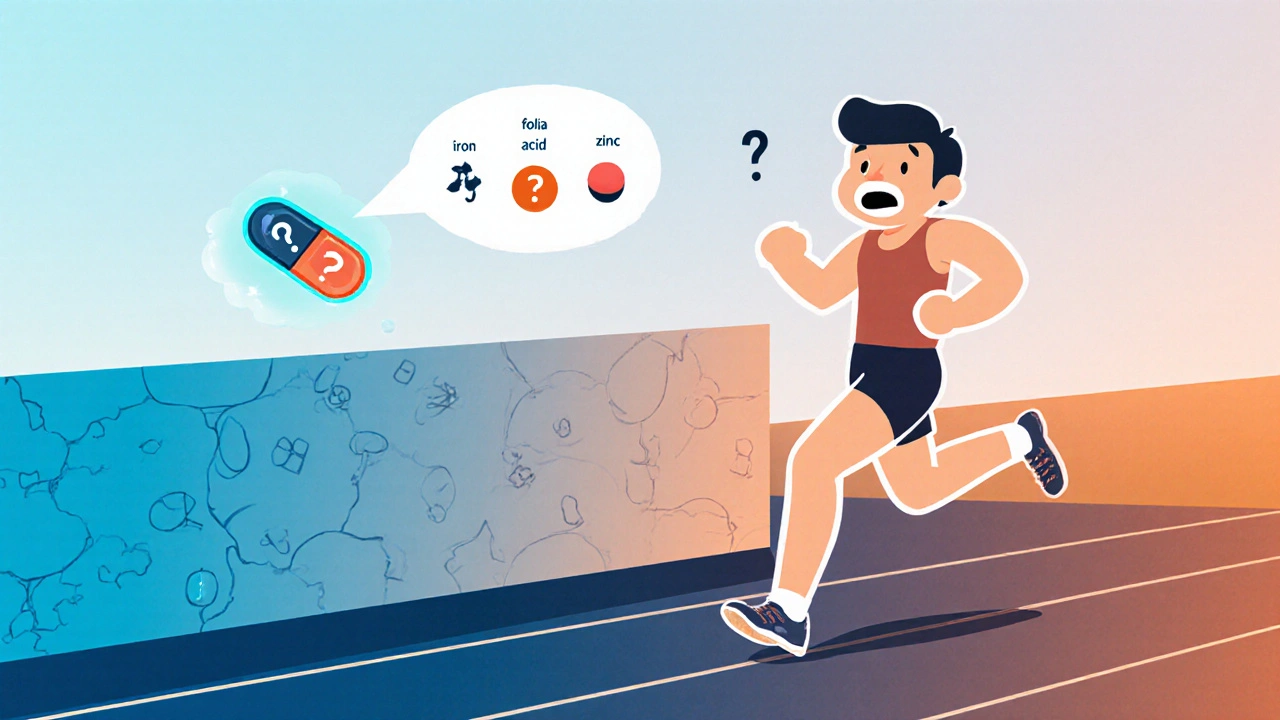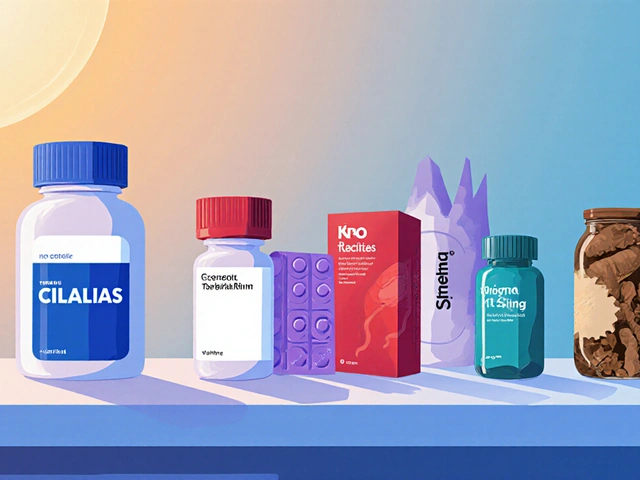Ever feel like you hit a wall during training, no matter how hard you push? You’re not alone - many athletes blame technique or training plans, but the missing link is often nutrition at the cellular level. A blend of Iron-Folic Acid-Zinc is a combined supplement that packs three crucial micronutrients into one dose to support oxygen delivery, DNA synthesis, and muscle repair. When each of these minerals works together, you can notice better stamina, quicker recovery, and more consistent power output.
Key Takeaways
- Iron boosts hemoglobin, improving oxygen transport to muscles.
- Folic Acid aids DNA and red blood cell production, supporting endurance.
- Zinc enhances immune health and protein synthesis, speeding recovery.
- The trio works synergistically, so taking them together is more effective than separate pills.
- Proper timing, dosage, and food pairing maximize absorption and minimize side effects.
How iron Fuels Your Muscles
Iron is a mineral essential for making hemoglobin, the protein in red blood cells that carries oxygen. During intense exercise, muscles demand more oxygen to produce ATP, the energy currency. Without enough iron, hemoglobin levels drop, leading to lower Oxygen Transport and early fatigue.
Research from the University of Sydney in 2022 showed that iron‑deficient endurance athletes saw a 12% jump in VO2 max after four weeks of supplementation. That translates to running faster or cycling longer before hitting the wall.
Practical Tips for Iron
- Take your iron dose on an empty stomach or with a vitamin C source (orange juice) to boost absorption.
- Avoid calcium‑rich foods or antacids within two hours of the dose, as calcium competes for the same transport channels.
- Recommended Dietary Allowance (RDA) for adult men is 8 mg/day and for women 18 mg/day; athletes often need 1.5× RDA.
Folic Acid: The Unsung Endurance Hero
Folic Acid is the synthetic form of vitamin B9, crucial for DNA synthesis and red blood cell formation. When combined with iron, it helps the bone marrow produce more healthy red blood cells, effectively expanding the oxygen‑carrying capacity of the blood.
In a 2023 trial involving 150 competitive runners, those who added 400 µg of folic acid daily to their iron regimen improved their race times by an average of 3.5% compared to iron alone.
How to Use Folic Acid
- One tablet of 400 µg meets the RDA for most adults; athletes can safely take up to 800 µg.
- Pair with iron in the same supplement; the two nutrients aid each other’s absorption.
- Consume with meals that contain leafy greens (spinach, kale) for additional natural folate.

Zinc’s Role in Recovery and Immunity
Zinc is a trace element that supports immune function, protein synthesis, and hormone regulation. After a hard workout, your body repairs micro‑tears in muscle fibers; zinc is a co‑factor for enzymes that stitch those fibers back together.
Data from the Australian Institute of Sport (2024) indicate that zinc‑supplemented athletes had a 20% reduction in post‑exercise muscle soreness and a 15% faster return to baseline performance.
Best Practices for Zinc
- Typical supplemental dose is 15-30 mg per day, staying below the tolerable upper intake level of 40 mg.
- Take zinc with protein‑rich foods (eggs, beans) to improve uptake.
- Avoid high‑phytate foods (whole grains, legumes) at the same time, as they can bind zinc and lower absorption.
The Power of the Triple Combo
Individually, iron, folic acid, and zinc each boost performance, but their interaction creates a multiplier effect. Iron supplies oxygen, folic acid ensures enough red blood cells to carry that oxygen, and zinc helps rebuild the muscles that use it.
When you combine them in one pill, you eliminate timing hassles and reduce the risk of taking excess amounts of any single mineral. The synergy also means lower overall doses can achieve the same benefit, cutting the chance of side effects like gastrointestinal upset.
| Mineral | RDA (Adults) | Main Performance Benefit | Key Food Sources |
|---|---|---|---|
| Iron | 8 mg (men) / 18 mg (women) | Improves oxygen transport & VO2 max | Red meat, lentils, fortified cereals |
| Folic Acid | 400 µg | Supports red blood cell production | Leafy greens, beans, citrus fruits |
| Zinc | 11 mg (men) / 8 mg (women) | Speeds muscle recovery & immune health | Oysters, beef, pumpkin seeds |
How to Incorporate Iron‑Folic‑Acid‑Zinc into Your Routine
- Choose a high‑quality supplement that lists all three nutrients on the label.
- Take the pill in the morning with a glass of orange juice for vitamin C‑enhanced iron absorption.
- Follow with a protein‑rich breakfast (e.g., eggs and whole‑grain toast) to aid zinc uptake.
- Space out calcium‑heavy foods (milk, cheese) for at least two hours after the dose.
- Monitor your energy levels and recovery for two weeks; adjust dose only under professional guidance.
If you’re a vegetarian or vegan, look for a plant‑based iron form (ferrous bisglycinate) and consider a B‑complex that includes folic acid.

Safety, Side Effects, and Who Should Avoid It
For most healthy adults, the combined supplement is safe when taken within the recommended limits. However, excess iron can cause constipation, nausea, or, in rare cases, iron overload (hemochromatosis). Zinc toxicity can lead to copper deficiency and altered taste.
People with known iron‑storage disorders, severe kidney disease, or those on certain antibiotics (e.g., tetracyclines) should consult a doctor before starting.
Frequently Asked Questions
Can I get the same benefits from food alone?
Whole foods provide iron, folate, and zinc, but the amounts needed for peak athletic performance often exceed typical diets. Supplements fill that gap, especially for endurance athletes with high iron turnover.
How long does it take to notice a performance boost?
Most athletes report measurable improvements in energy and recovery within 3-4 weeks, as the body rebuilds red blood cell counts and repairs muscle tissue.
Should I take this supplement on rest days?
Yes. Consistent daily intake maintains stable nutrient levels, which supports recovery on both training and rest days.
Is the supplement safe for women of childbearing age?
Women can safely use the combo, but they should stay within the recommended folic acid limit (800 µg) to avoid masking B12 deficiency. Consulting a health professional is advised.
Can I stack this with other sports supplements?
Generally, yes. It pairs well with protein powders, creatine, or beta‑alanine. Just watch for overlapping minerals - avoid extra iron or zinc from other sources.
Bottom Line
Boosting athletic performance isn’t just about training harder; it’s about giving your body the right building blocks. Iron‑Folic‑Acid‑Zinc delivers a focused mix that enhances oxygen delivery, red blood cell health, and muscle repair. With proper dosing, timing, and a bit of food‑pairing savvy, you can turn fatigue into fuel and see real gains on the track, field, or gym floor.







Diane Holding
October 25, 2025 AT 20:31